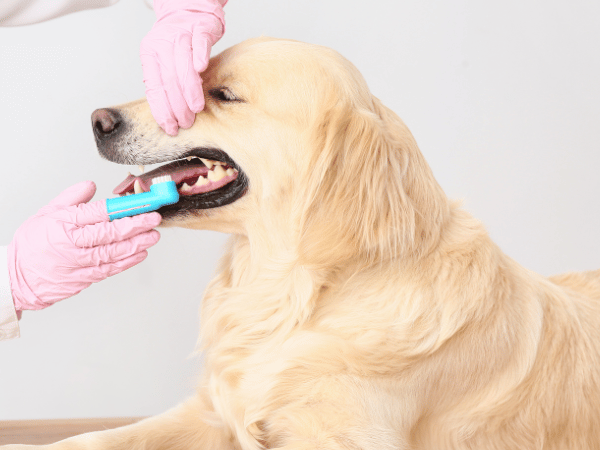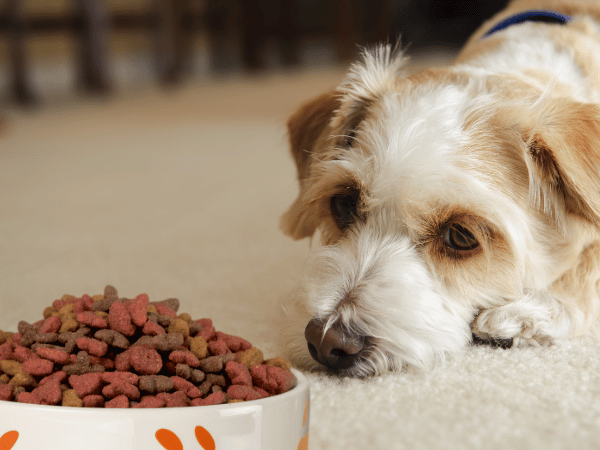Curious about the most common dog dental problems that can affect your furry friend? At Pet Lovers Diary, we understand the importance of maintaining good dental health for dogs. In this article, we will cover the most common dog dental problems and their symptoms. By being aware of these issues, you can ensure that your beloved pet receives the care they need to lead a healthy and happy life.
What’s in This Guide?
- Dog Dental Problems: Signs of Dental Disease in Dogs (General)
-
- Dog Plaque on Teeth
-
- Dog Tooth Decay & Dental Caries
-
- Discolored Teeth in Dogs
-
- Gingivitis in Dogs
-
- Periodontal Gum Disease in Dogs
-
- Dog Tooth Abscess
-
- Dog Tooth Fractures or Broken Teeth
-
- Missing or Loose Dog Teeth
-
- Dog Tooth Resorption
Dog Dental Problems: Signs of Dental Disease in Dogs (General)
Before we dive into the most common dog dental problems, let’s discuss the general signs of dental disease in dogs. It’s important to be aware of these symptoms as they can indicate pain and discomfort in your furry friend. Some visual changes may also be observed in the dog’s teeth, gums, or face.
Behavioral Signs of Dental Problems in Dogs:
- Reduced appetite or picky eating in dogs
- Difficulty eating
- Chewing on only one side of the mouth
- Dropping food while eating
- Chattering of teeth
- Pawing at the mouth
- Sensitivity to being touched near the mouth
- Difficulty sleeping
- Drooling excessively
Other Observable or Visible Signs of Dog Dental Issues:
- Visible changes to teeth
- Discolorations on the tooth
- Bleeding gums or blood on the dog’s chew toy
- Pus coming from the mouth
- Swelling on the face near the cheeks and eyes
- Inflammation on any part of the mouth
If you notice any of these signs of dog dental issues, it’s crucial to contact a trusted veterinary clinic that offers dog dental care. Prompt treatment can alleviate pain and prevent further complications.
1. Dog Plaque on Teeth
Plaque on dog teeth is a thin, sticky, yellowish film of bacteria that forms due to the accumulation of food particles. If not removed, plaque can harden into tartar, leading to more severe dental issues. While plaque itself does not cause pain in dogs, its presence indicates the need for teeth cleaning. To prevent plaque buildup, include toothbrushing in your dog’s dental care routine.
Signs of plaque on dog teeth include:
- Visible yellow or brown film on teeth
- Bad breath (halitosis)
2. Dog Tooth Decay & Dental Caries
Dog tooth decay involves the deterioration of tooth structure due to bacterial action, resulting in cavities or holes. Dental caries are areas of decay on the tooth’s surface. While visible changes in the teeth can indicate dental caries, behavioral signs such as difficulty chewing or eating are reason enough to see a veterinarian. Remember that dental caries are relatively rare in dogs.
3. Discolored Teeth in Dogs
Normally, dog teeth are white or off-white in color. However, if a dog’s tooth is yellow, brown, spotted, dark, pink, purple, or grey, it means the tooth is discolored. Discoloration can be due to various reasons, including the presence of plaque or tartar, dental staining, tooth attrition, physical trauma, or tooth resorption.
Signs of Discolored Teeth in Dogs:
- Yellow dog teeth: May require veterinary dog teeth cleaning to remove plaque.
- Yellow-brown or brown stains on dog teeth: Indicate tartar buildup and may require veterinary dog dental cleaning.
- Brown or black spots on dog teeth: Might be due to dental staining from tartar or dental caries, which may require tooth extraction.
- Widespread dark color affecting gums: Can be a sign of late-stage periodontal gum disease, requiring immediate veterinary attention.
- Pink, purple, grey, or black teeth on dogs: Suggest physical trauma or tooth resorption and should be addressed by a veterinarian.
4. Gingivitis in Dogs
Gingivitis is the inflammation of the gums, often caused by plaque and tartar accumulation along the dog’s gumline. If left untreated, gingivitis can progress to periodontal gum disease, which is a potentially life-threatening dental issue in dogs.
Signs of gingivitis in dogs include:
- Bad breath (halitosis)
- Bleeding gums, especially during brushing or chewing
- Redness, swelling, and puffiness of the gums
If you suspect gingivitis in your dog, we encourage you to book an appointment with a veterinary clinic that offers dog dental care. Prompt treatment can prevent the progression of gingivitis into more severe conditions.
5. Periodontal Gum Disease in Dogs
Periodontal gum disease is an advanced stage of gingivitis that involves inflammation and infection of the supporting structures around the teeth. This disease can lead to tooth loss and various systemic problems, such as liver disease and heart disease. Detecting and addressing periodontal gum disease early is crucial for your dog’s overall health.
Signs of periodontal gum disease in dogs include:
- Bad breath (halitosis)
- Receding gumline
- Pus or discharge around the gumline
- Loose or shifting teeth
- Dark, discolored teeth
If you suspect periodontal gum disease in your dog, reach out to a veterinarian for further evaluation and treatment.
6. Dog Tooth Abscess
A dog tooth abscess is a painful and pus-filled pocket of infection that forms within the tooth or surrounding tissues. It occurs as a result of untreated dental problems such as tooth fractures, decay, or periodontal gum disease. Prompt treatment and pain management are necessary to alleviate your dog’s discomfort.
Signs of a dog tooth abscess include:
- Pain or discomfort while eating or picky eating
- Bad breath (halitosis)
- Pus coming from the mouth
- Swelling on the face, often near the affected tooth
If you observe any of these symptoms, reach out to a veterinarian as soon as possible.
7. Dog Tooth Fractures or Broken Teeth
Dog tooth fractures or broken teeth can result from trauma or chewing on hard objects. These can cause pain and discomfort to your dog, and prompt veterinary care is essential.
Signs of dog tooth fractures or broken teeth include:
- Pain or discomfort while eating or picky eating
- Visible cracks or chips on the tooth surface
- Bleeding from the broken tooth
If you notice any of these symptoms, seek immediate vet care for your furry friend.
8. Missing or Loose Dog Teeth
Missing or loose dog teeth can be a result of advanced dental issues such as severe periodontal disease or trauma. It’s important to address these issues promptly to prevent further complications.
Signs of missing or loose dog teeth include:
- Pain or discomfort while eating or picky eating
- Loose or wobbly teeth
- Visible gaps in the dental arch of the dog
If you observe any of these symptoms, seek urgent care from a veterinarian.
9. Dog Tooth Resorption
Tooth resorption is a painful condition in which the tooth structure is gradually broken down and absorbed by the body, usually starting at the roots. Although the cause of tooth resorption in dogs is unknown, early detection and treatment can alleviate your dog’s pain.
Signs of dog tooth resorption include:
- Pain or discomfort while eating or picky eating
- Redness and inflamed areas around the teeth
- Visible holes or defects in the tooth enamel
- Pink discoloration of the tooth
If you notice any of these symptoms, reach out to a veterinarian for further evaluation and treatment.
Final Thoughts on Dog Dental Problems
While there are various dog dental problems that can affect your furry friend, the good news is that most of them can be prevented with a great dog dental care routine. This includes at-home dental care, such as toothbrushing, dental chews, or water additives, and regular veterinary dental care, such as dog dental exams and teeth cleaning.
Complete dog dental care is available at Pet Lovers Diary, where we offer routine dental care for dogs, including dog dental exams and teeth cleaning. Our veterinary clinics are open 365 days a year until 10 pm, and we also provide urgent care services. Book an appointment online or through the Pet Lovers Diary app to get your pup started on great dental care.
As always, we’re with you every step of the way!


